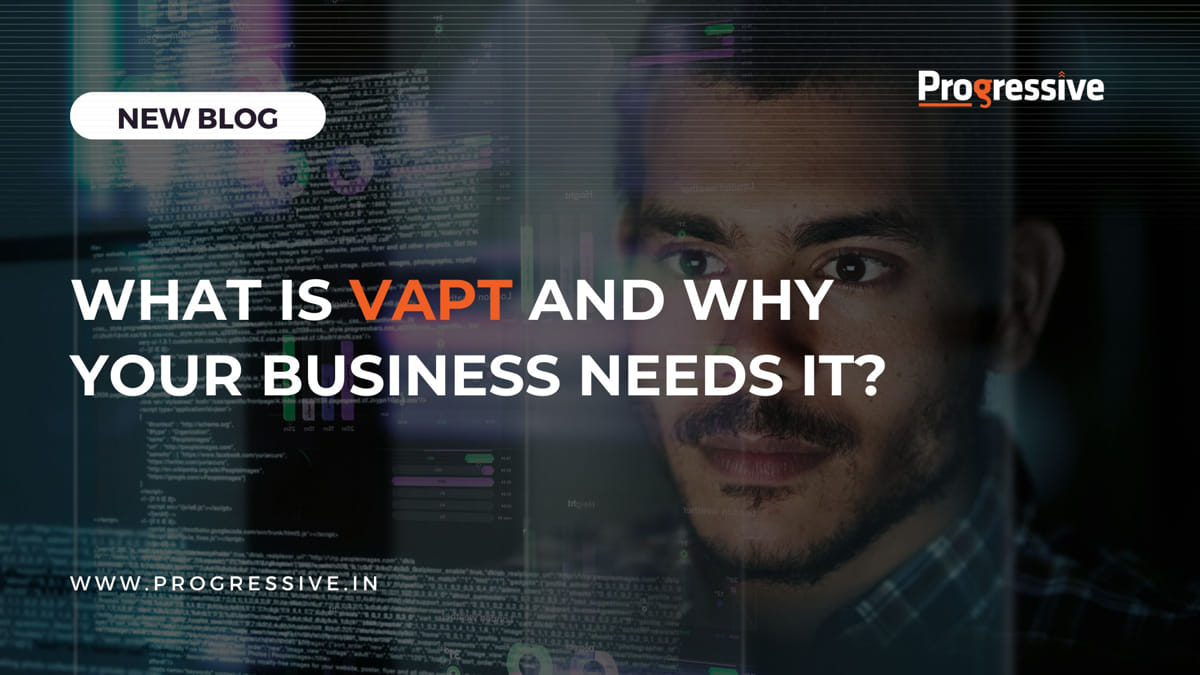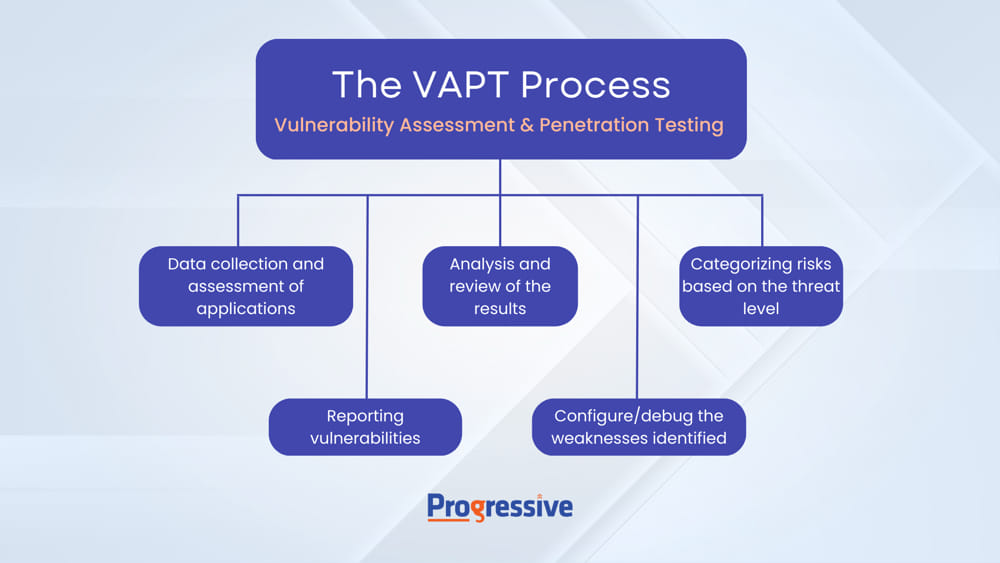
In a time of a faster, ever-changing business world, a company’s foundational security has never been more important. The phenomenal growth led by technologies has also made business systems more prone to security risks. Vulnerability Assessment and Penetration Testing (VAPT) is one of the cyber security practices aimed at evaluating and validating the security of your IT infrastructure against potential threats.
Here are some facts to consider:
- In a latest survey, 74% of organizations believe that they are at moderate or high risk of being affected by threats from within the organization.
- According to Gartner, 2022 has seen an increase in cyberattacks originating with third-party affiliates and services.
- 85% of enterprises that chose to implement system security measures, including VAPT, were able to see a positive impact on their business performance. – TechJockey
What is VAPT?
Vulnerability Assessment & Penetration Testing is a more in-depth and advanced examination of applications and systems compared to any individual test. Through VAPT, security leaders can obtain a comprehensive understanding of the vulnerabilities and potential threats affecting their processes. CISOs can take preventive measures to secure their sensitive data and IT infrastructure subsequently.
Systems and applications, whether in-house or managed by a third party, may contain vulnerabilities for several reasons, which leads to serious problems. However, detecting these vulnerabilities early on can lead to fixing them and reducing the associated risks. VAPT identifies the threats and eliminates them before they impact business operations.
Why VAPT is Important?
Today, various cyber threats such as ransomware, phishing, third-party security breaches, cloud security vulnerabilities, state-sponsored attacks, and crime-as-a-service are prevalent. VAPT is a process of determining the preparedness of your digital systems against these threats. It aids in identifying the potential for various attacks and security weaknesses.
Through VAPT testing, you can address existing vulnerabilities and reduce the risk of exploitation by cybercriminals. Regular VAPT evaluations are essential for any type of organization, regardless of industry. It is about ensuring the readiness and validation of the security posture of your IT infrastructure.
What is the process of VAPT?

Phase #1
Collecting Data and Analyzing Applications, Networks & Systems
This phase involves collecting relevant data and assessing the entire system to identify potential vulnerabilities. The data collected can include network configurations (wired / wireless), system logs, third-party integrations, and other relevant information. The assessment is done using several tools and threat-hunting techniques, including both manual testing and automated scans.
Phase #2
Evaluating the Results & 360-degree Review
In this stage, the results from the data collection and application assessment are analyzed to identify actual vulnerabilities. The findings are then reviewed and compared against industry best practices, adherence to regulatory compliance, and security standards.
Phase #3
Categorizing the Identified Risks
Based on the level of threat posed by the vulnerabilities identified, they are categorized into different risk levels. This allows organizations to prioritize the remediation of vulnerabilities based on their expected impact on business operations.
Phase #4
Vulnerability Reporting
In this step, we document the results of the vulnerability assessment in a comprehensive report. The report includes a detailed description of the vulnerabilities, the sources, and their impact, and recommended next-best actions based on the categorization of weaknesses.
Phase #5
Configuring the Weaknesses and Debugging
In the final phase, we configure or debug the systems to eliminate weaknesses and remediate the identified vulnerabilities. This may involve applying patches, modifying configuration settings, or implementing additional security controls. Ensuring that the systems remain secure and promptly detecting and remediating any new vulnerabilities are the key benefits of conducting regular VAPT assessments.
What are the benefits of VAPT?
- Provides in-depth analysis of potential cyber threats in and around the systems.
- Ensures visibility into data, networks, devices, and applications for protection.
- Highlights internal as well as external risks such as a vendor or third-party entities.
- Identifies misconfigurations and security loopholes such as rogue access points, databases or insecure dev/test environments that can consequently cause a breach.
- Defines the risk level and helps craft a robust cybersecurity strategy.
- Ensures the reliability and availability of networks and applications.
- Safeguards the systems to avoid unauthorized access and prevent data loss.
- Helps in achieving industry standards and regulatory compliance.
Final Words
Apart from identifying the existing threats, one of the top advantages of the Vulnerability and Penetration Testing Process is that it provides detailed information on the level of risk associated with the identified threats. This helps determine the current security posture of your organization and set goals to achieve the best cyber defence possible.
An enormous amount of information is available on the internet about protecting company data. In fact, it is crucial for businesses of all sizes to rely upon a trusted Vulnerability Assessment and Penetration Testing (VAPT) service provider for robust cyber security preparedness.
How Progressive Infotech can help with VAPT Assessment?
Progressive’s Vulnerability Assessment and Penetration Testing (VAPT) service offer a thorough assessment and ongoing monitoring to uncover any existing vulnerabilities and weaknesses. Leveraging certified security professionals, world-class tools, and a 24/7 Security Operations Center, we pinpoint flaws across your entire IT infrastructure that could leave it vulnerable to a cyber-attack and recommend strategies for mitigation. Start Here.